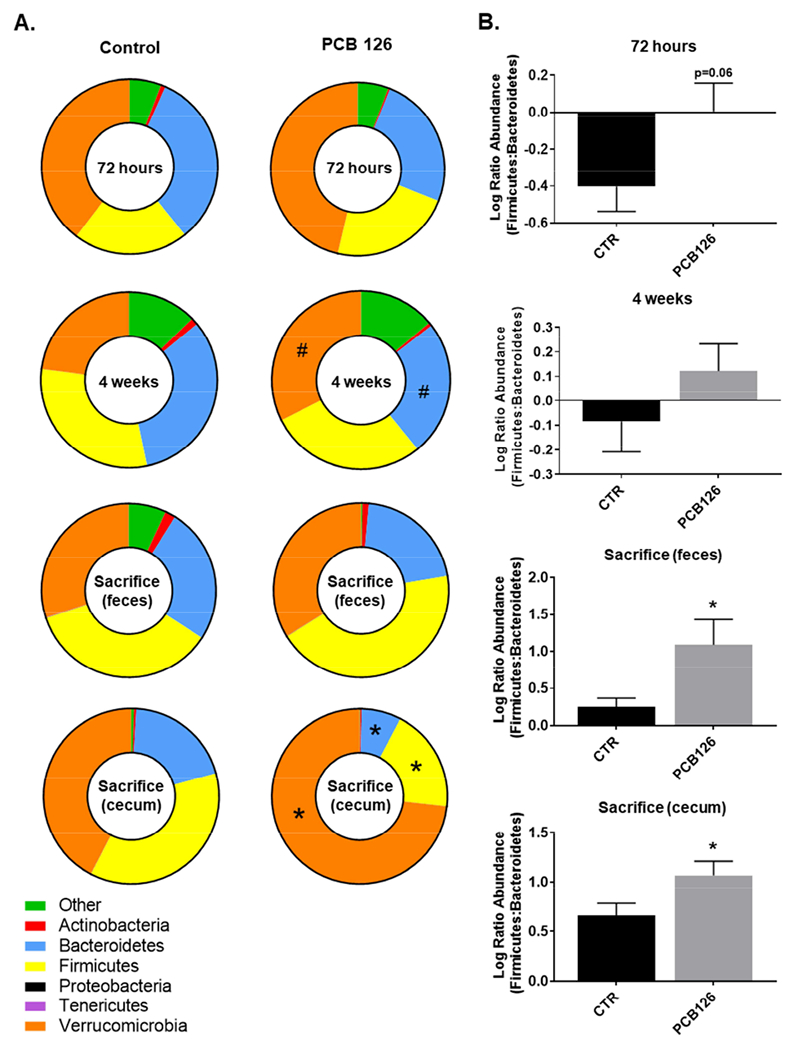Figure 1.

Exposure to PCB 126 drives phyla level alterations in bacterial populations over time. Male Ldlr−/− mice were fed an atherogenic diet for 14 weeks and exposed to PCB 126 (1μmol/kg) at weeks 2 and 4. Fecal samples were collected at the start of the study, 72 hours, 4 weeks, and at sacrifice (12 weeks) post first PCB 126 exposure. Cecum contents were also collected at the conclusion of the study. 16S rRNA sequencing was conducted and data was analyzed using QIIME. A. Changes in the taxonomic composition of the gut microbiota over time at the phylum level. Significant differences were observed in the cecum contents at sacrifice. Cecum contents displayed a significant increase in Verrucomicrobia and decreases in Firmicutes and Bacteriodetes. Data are presented as relative abundances. B. Firmicutes / Bacteroidetes ratio changes over time. PCB 126 increased the ratio of Firmicutes / Bacteriodetes in both the feces and cecum contents at sacrifice. Data are presented as mean ± S.E.M (n=10 per group; Student’s t-test). Statistical significance is denoted by * (p<0.05). # represents (p<0.1).
